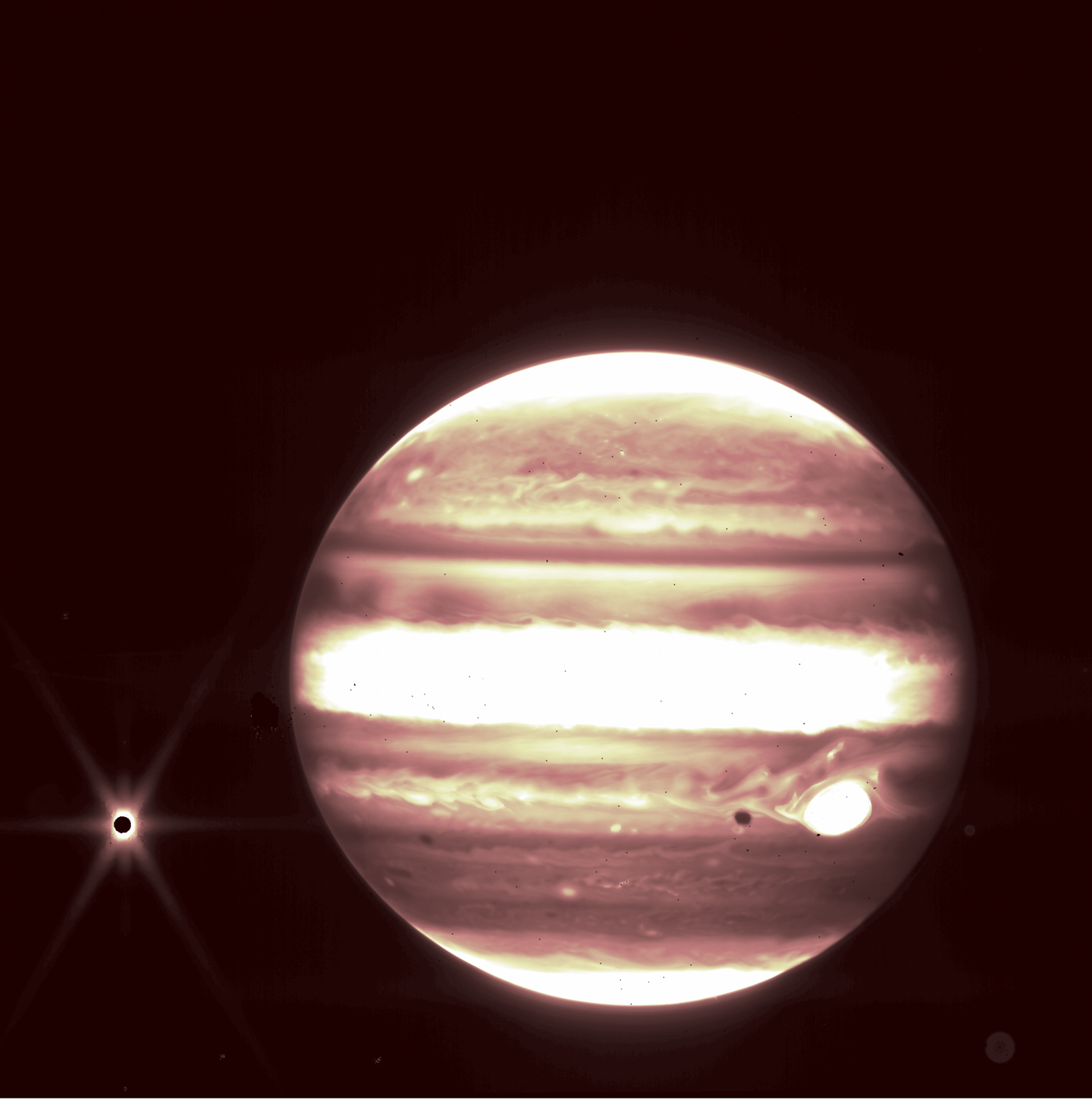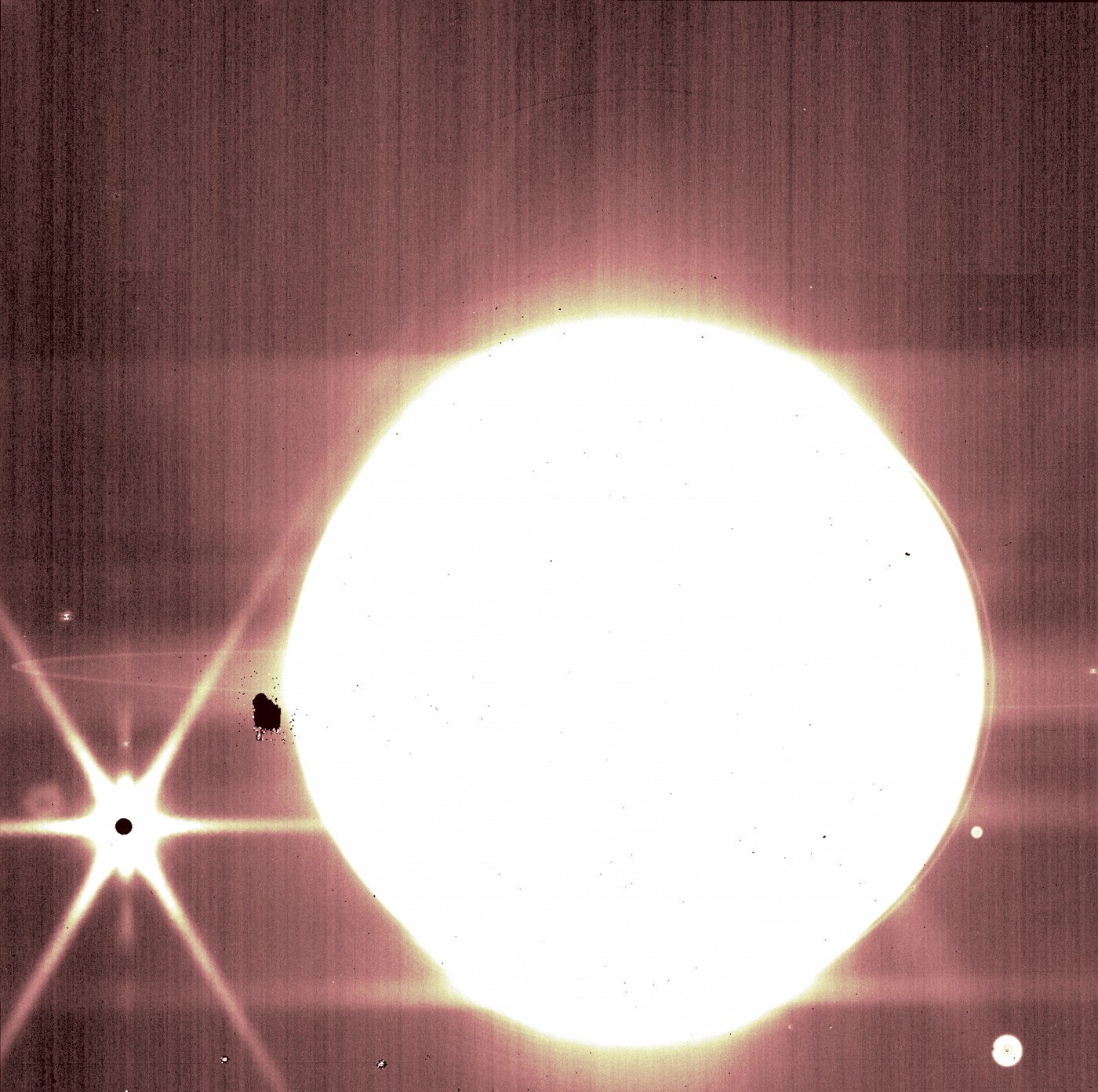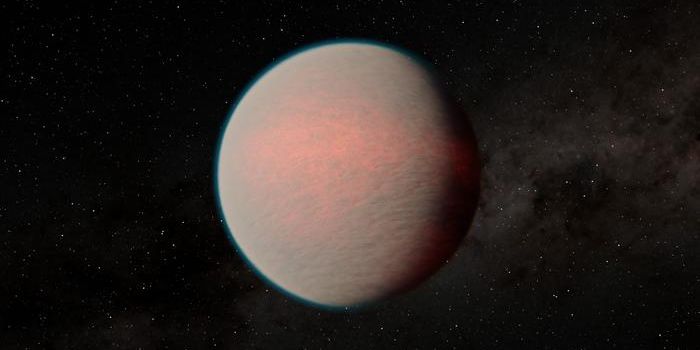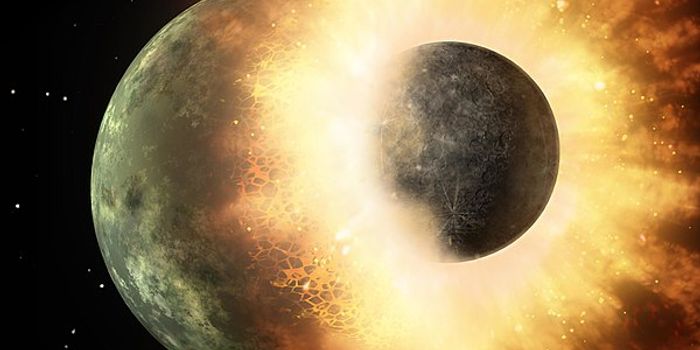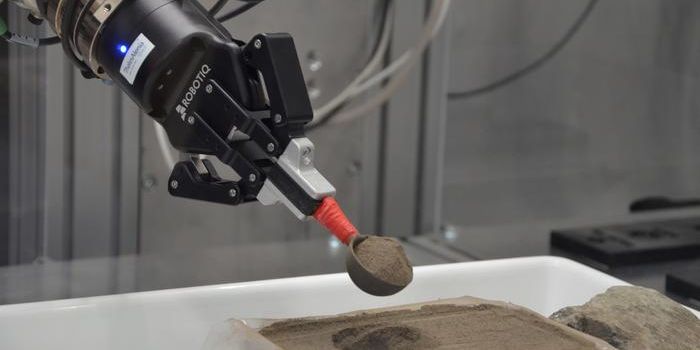The James Webb Space Telescope Takes a Closer Look at Jupiter
James Webb Space Telescope has awed scientists and the public alike with the first images that were released on July 12, 2022 and it is safe to say that we cannot even imagine the amazing discoveries this new telescope will make! Since the images were revealed, data from the commission period has been released on the Space Telescope Science Institute’s (STScI) Mikulski Archive for Space Telescopes.
The newly released data was obtained to test and calibrate the telescope’s instruments before science operations officially began on July 12th. The data includes images of Jupiter, as well as images and spectra of several asteroids – none of which were highlighted during the press conference for the release of the first images. This data shows that, on top of studying objects that are in the distant Universe, Webb can also track and produce high resolution images and spectra of Solar System objects.
The image above was obtained by the NIRCam instrument at a wavelength of 2.12 micrometers. At this wavelength in the infrared, you can easily recognize familiar features of Jupiter that are readily seen at visual wavelengths. The distinct bands that encircle the planet are clearly visible, as well as the Great Red Spot, a large storm that is wider than the diameter of the Earth and has likely been raging since as early as the 1600’s, when telescopes were invented. Europa – a moon of Jupiter that likely hosts an ocean below its icy crust – is also seen in the left side of the image. Just left of the Great Red Spot, the shadow of Europa is clearly visible! The team could not believe how detailed these images were and were extremely excited to think about the capability of the new telescope and the opportunity it will provide to observe many more objects in our Solar System.
The image above was obtained by the NIRCam instrument at a wavelength of 3.23 micrometers. At this wavelength in the infrared, you can easily see some of Jupiter’s rings, as well as other moons, and hazes around the planet and its moons. It shows some of Jupiter’s rings, as well as other moons, and hazes around the planet and its moons. This image shows that it may be possible to image plumes of material that spew out of objects in our Solar System, such as the material that is spewing out of Jupiter’s moon Europa and Saturn’s moon Enceladus.
Sources: nasa.gov
